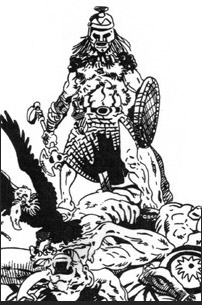Below find the results of a search for the word origins of the two intimate relationships that the slaves and pressed sailors, mostly teenagers, of The Great Age of Sail from 1492 to 1860, which almost exactly coincided with the Plantation Period in North America, beginning with French settlement in Canada in the 1530s and the Spanish in Carolina in the 1560s and English in the 1580s. This researcher does not think that Plantation economics brought any of these terms into use. They come from Latin, French, Middle English, Gaelic and possibly a Middle Eastern language and all refer to either demons, monsters or heretics which terrorize children or commit sodomy, which has been one of the two perennial adult crimes against children since the dawn of civilization. Keeping in mind that the ships of the age of sail were ran by men and staffed predominantly by teenagers, secondarily by men and also by at least one pre-pubescent child on each ship, and that there were no women present, and further that most sailors served against their will, having been bullied onto ship by large burly men, and also that all sailors were routinely beaten at the command of their superiors, it stretches reason to assume that the common fate of modern children held under identical circumstances [in prisons and corrections facilities, which these ships were in actual fact], that being rape by adults, was not visited upon these poor sailor boys. One need only consider Winston Churchill’s quip about “rum, buggery and the lash” having been responsible for British Navy functionality and the widespread knowledge that pirates of the Age of Sail were as likely as not to be homosexual or bisexual.
When one looks at the coming into English currency of these various terms for monstrous abuser of children being the 1510s, 1550s, 1570s and 1580s, we see the exact decades during which the English navy first stepped onto the world scene to challenge the Spanish and Dutch mastery of the seas and its triumph in 1588. That these ships were typically and cruelly staffed by abducted lads and men of less than common size officered by economically aspirational men and their felonious bullies, it becomes obvious that the spread of English maritime activity accounted in some part for the expansive usage of such terms.
It is likewise of interest that lads and men shipped to Plantation America as chattel outnumbered women by at least 10 to 1 and that many of these women—and certainly the most desirable—were acquired as wives or concubines by the Plantation owners. The lower economic strata of the Caucasian population of Plantation America, unlike the African population, was not a breeding population, but a disposal demographic heartily implied in the terms “waste men”, “white trash,” and “boy.” Where women were used as slaves, sex with them was strictly prohibited as was marriage.
All of the above conditions would encourage man-boy sex abuse in the merchant and military fleet as well as on the Plantations. For those who would survive or escape this condition, life as a pirate [as suggested by numerous runaway slave ads] or as an Indian [as demonstrated by no less than a dozen abduction and adoption narratives] would hold great appeal.
From the Bugaboo or Bugbear that frightens or eats children coming into currency just as orphans and kidnapped children [and indeed the term kidnapped] gained economic currency as slave sailors and plantation slaves, to the Bugger who rapes boys and men and inhabits every ship of the British Navy during its heyday, it is difficult to deny that there is no connection between Plantation life and life aboard the ships that fueled the plantations with its disposable human livestock.
To further buttress this supposition, consider that the tradition of whipping and beating and flogging slaves on the Plantations with paddles, whips and a cat-o’-nine tails, came directly from the English maritime tradition, where even Thomas Pellow’s loving uncle flogged him every day. Beatings ranged from 40 to 200 strokes aboard ship, with 100 strokes often being crippling or lethal. Beatings on the Plantations were generally limited by law to 30 or 40 strokes, with such Crown ordinances being among the unspoken burdens and limitations on “liberty,” under which the Founding Fathers groaned.
With the correlation of maritime torture so direct to plantation torture, and lack of access to women and female children almost as limited in the plantations as on board ship, as well as a high percentage of criminal convicts and POWs being present in both populations alongside young teenage males, it is most likely that homosexual rape was, as it is in modern juvenile corrections, a more common fate than the monastic toiling up the ladder of self-improvement that standard academic opinion implies.
If the standard belief that every African American slave woman was raped by her master is true—and I will not argue against academic opinion on this count—than how much truer must the rape of European American boys have been? For a laboring woman, a field hand, is easily twice as strong as a malnourished boy of 12. Also, while I suspect that most slave masters did rape their female slaves, there were laws in place to punish male slaves who impregnated female slaves, for the very clear purpose of keeping the woman’s womb free for the use of the master and if not so in use, to keep her free of the burden of childbearing and rearing so that she could work the harder at her assigned tasks.
From etymology, to maritime and plantation laws and economics, there is no place where one can make a case against child rape being a foundation stone of Plantation America, other than the naïve belief in universal goodwill among men, including the notions that power does not corrupt and that those cruelly wounded are their tormentors’ moral superiors who would never wound weaker fellows in their turn. As a friend of mine recently opined, “Homosexual men only produce two things: homosexuals and pedophiles.”
Paying goodness forward is a high-minded notion, with its very sentimental appeal being its opposition to the common reality that evil done is typically payed downward as evildoing.
Master whips slave.
Slave beats wife.
Wife beats child.
This is a commonly understood behavioral trajectory assigned to late stage African American slavery.
The exact conditions applied to European American slavery, minus one important element, the wife.
All that beaten man-slave had to vent his cruelty and lust upon was the slave boy sleeping next to him on the barn floor, just as the long-suffering sailor, whipped by his captain’s orders, had only those weaker than him to serve as the subjects of his tiny, miserable kingdom of the damned.
Citations
bugaboo (n.)
"something to frighten a child, fancied object of terror," 1843, earlier buggybow (1740), probably an alteration of bugbear (also see bug (n.)), but connected by Chapman ["Dictionary of American Slang"] with Bugibu, demon in the Old French poem "Aliscans"from 1141, which is perhaps of Celtic origin (compare Cornish bucca-boo, from bucca "bogle, goblin").
bugbear (n.)
"something that causes terror," especially needless terror, 1580s, a sort of demon in the form of a bear that eats small children, also "object of dread" (whether real or not), from obsolete bug "goblin, scarecrow" (see bug(n.)) + bear (n.).
bug (n.)
"insect, beetle," 1620s (earliest reference is to bedbugs), of unknown origin, probably (but not certainly) from or influenced by Middle English bugge "something frightening, scarecrow" (late 14c.), a meaning obsolete since the "insect" sense arose except in bugbear (1570s) and bugaboo (q.v.).
buggery (n.)
mid-14c., "heresy," from Old French bougrerie, from bougre "heretic" (see bugger(n.)). Later (1510s) "unnatural intercourse" with man or beast, "carnalis copula contra Naturam, & hoc vel per confusionem Specierum;" from bugger (n.) + -y (4).
bugger (n.)
"sodomite," 1550s, earlier "heretic" (mid-14c.), from Medieval Latin Bulgarus "a Bulgarian" (see Bulgaria), so called from bigoted notions of the sex lives of Eastern Orthodox Christians or of the sect of heretics that was prominent there 11c. Compare Old French bougre "Bulgarian," also "heretic; sodomite."
The sect I question was the Bogamils, who were persecuted heavily by the Orthodox Byzantines.
link › etymonline.com/word/bugger
Explore Plantation America
Support Plantation America Research
To support this project and view some graphics go to:
link › patreon.com/jameslafond











